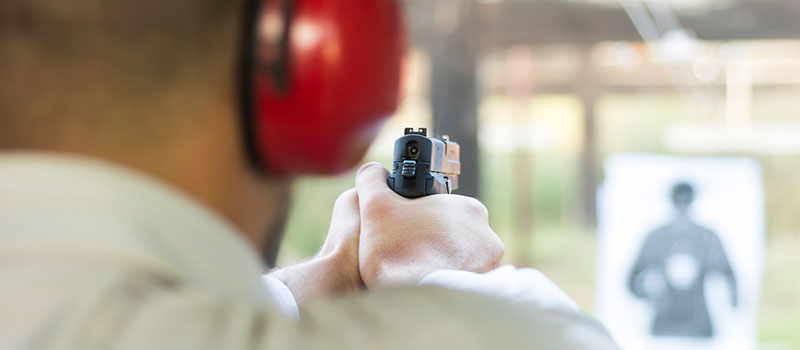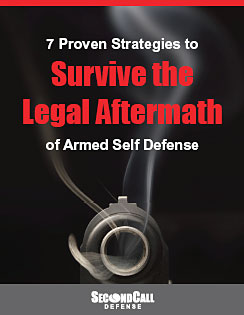Carry Gun Upgrades
by Keith Coniglio
No firearm you own could benefit more from improved accuracy and fit than the one with which you may defend your life, yet many shooters are hesitant to make modifications out of fear that the process is somehow beyond their abilities. The truth is, improvements can be made with easily available drop-in parts, requiring only basic tools that you likely already own.
Sights
Stock pistol sights on some carry pistols may be difficult to visually pick up, especially in low light; they may be fixed, requiring Kentucky windage for your chosen carry load; they may be constructed of less-robust plastic. These are all excellent reasons to consider installing a new set.
With the exceptions of pistols with milled rear sight channels, sights on most modern handguns can easily be replaced, allowing you to swap a fixed sight for an adjustable one, a plastic set for steel, or a standard set for night sights or those sporting fiber optic illumination. Websites such as Brownells sell non-marring brass drift punches for this very purpose for as little as $12. Gently tap the existing sight mount out of the dovetail cut, align the new mount with the dovetail, and then gently hammer it in. The process is even simpler for adjustable-sight revolvers — the rear sight is part of a rib held to the frame by simple screws — and front sights may be screwed to slides, dovetailed, or held to the barrel with a roll pin.
If you have concerns about your hammer-tapping skills, you could invest in a universal sight pusher (available from many online sources, ranging from $50-$150). This is a device that clamps to a semi-auto pistol’s slide, allowing you to apply gradual pressure by turning screws rather than hammering.
Triggers and Action Springs
Trigger control is fundamental to accuracy, and fighting a heavy or gritty trigger can pull your sights off-target at the critical split-second before firing. It can also make the gun unpleasant to shoot, leading to infrequent practice. The notion of tinkering with one’s trigger can be intimidating for many, but is little more complicated than replacing sights and can pay huge dividends.
It is completely possible to replace a trigger alone — say, for something with more ergonomic and comfortable contours — while retaining all other factory parts. However, many shooters will also replace hammer, trigger, and rebound springs to reduce trigger pull or smooth out trigger travel. These springs are sold by companies such as Wilson Combat and Wolff Gunsprings, which offer model-specific sets to reduce the overall force required to manipulate the trigger.
The trigger group for many semi-autos is held in by one or two pins, easily removed with the ubiquitous hammer and drift punch. For some revolvers, it may be necessary to remove the side plate to access the trigger’s internals but exercising caution around the small internal springs should avoid any problems. If you need the reassurance of seeing the process first, there are myriad instructional YouTube videos from such trusted names as MidwayUSA and Jerry Miculek.
This is an area in which to exercise some caution! A light trigger is a joy to shoot, but can lead to accidental discharges under duress or when wearing winter gloves, and reducing the power of a revolver’s hammer spring may result in light primer strikes which fail to ignite cartridges consistently. Replacing a pistol’s action springs (especially those with heavy double-action pulls) is worth serious consideration, but exercise care, range-test your firearm thoroughly after installation, and remember your safety rules.
Grips
Your pistol’s grips are easy to overlook as little more than a cosmetic feature, but are your “user interface” to your firearm. The right set of grips can fit your gun specifically to you, rather than a general hand size. They can aid in retention, make indexing more consistent, and provide faster follow-up shots by mitigating recoil.
From barely-there boot grips to Pachmyr’s “Compaq” line to palm-filling, overmolded options from Hogue, new grips on a revolver can change its entire balance and natural point of aim, and can make a crucial difference in trigger reach from backstrap to trigger face. Aftermarket grip panels for semi-autos may not make as dramatic a difference but can still vary the thickness and “gripability” of the gun, and offer everything from target-style thumbrests to wrap-around finger grooves. Semi-autos with molded polymer frames (Glocks or Kahrs, for example) have no grip panels, but can still benefit from the use of rubberized grip sleeves, which can add both front strap finger grooves and palm swells for better indexing and a less brick-like feel.
Small changes can make great improvements in the accuracy, reliability, and comfort of your carry gun. Don’t let fear of the unknown keep you from making your gun fit you.
Keith Coniglio is a father, software tester, NRA-certified pistol instructor, and devoted Second Amendment advocate. He is also the editor-in-chief of Descendants of Liberty Press, a site dedicated to rekindling Americans’ passion for – and defense of – their Constitutional rights and personal liberty.


